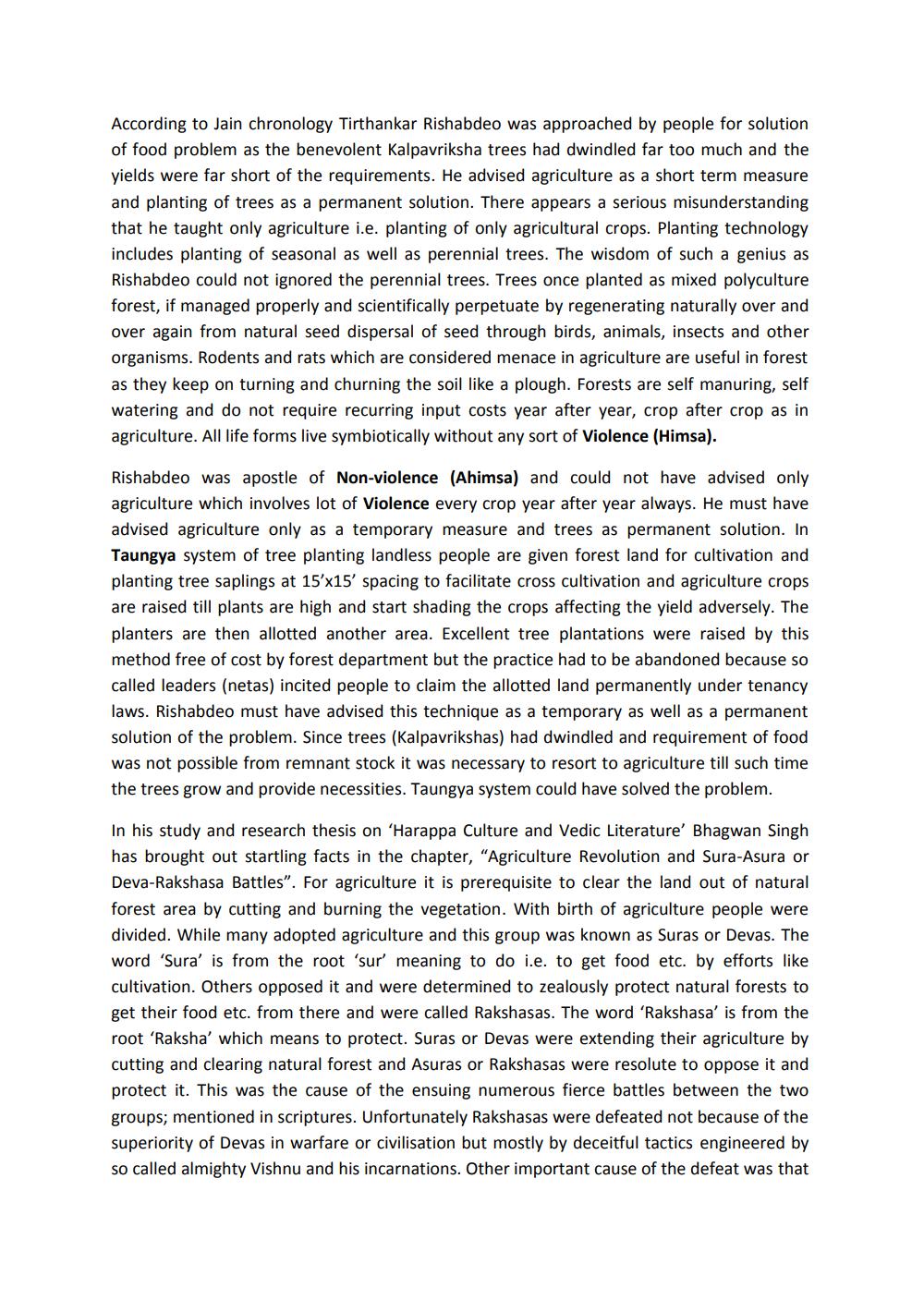Book Title: Kalpavrikshas The Benevolent Trees Author(s): Publisher: ZZZ Unknown View full book textPage 6
________________ According to Jain chronology Tirthankar Rishabdeo was approached by people for solution of food problem as the benevolent Kalpavriksha trees had dwindled far too much and the yields were far short of the requirements. He advised agriculture as a short term measure and planting of trees as a permanent solution. There appears a serious misunderstanding that he taught only agriculture i.e. planting of only agricultural crops. Planting technology includes planting of seasonal as well as perennial trees. The wisdom of such a genius as Rishabdeo could not ignored the perennial trees. Trees once planted as mixed polyculture forest, if managed properly and scientifically perpetuate by regenerating naturally over and over again from natural seed dispersal of seed through birds, animals, insects and other organisms. Rodents and rats which are considered menace in agriculture are useful in forest as they keep on turning and churning the soil like a plough. Forests are self manuring, self watering and do not require recurring input costs year after year, crop after crop as in agriculture. All life forms live symbiotically without any sort of Violence (Himsa). Rishabdeo was apostle of Non-violence (Ahimsa) and could not have advised only agriculture which involves lot of Violence every crop year after year always. He must have advised agriculture only as a temporary measure and trees as permanent solution. In Taungya system of tree planting landless people are given forest land for cultivation and planting tree saplings at 15'x15' spacing to facilitate cross cultivation and agriculture crops are raised till plants are high and start shading the crops affecting the yield adversely. The planters are then allotted another area. Excellent tree plantations were raised by this method free of cost by forest department but the practice had to be abandoned because so called leaders (netas) incited people to claim the allotted land permanently under tenancy laws. Rishabdeo must have advised this technique as a temporary as well as a permanent solution of the problem. Since trees (Kalpavrikshas) had dwindled and requirement of food was not possible from remnant stock it was necessary to resort to agriculture till such time the trees grow and provide necessities. Taungya system could have solved the problem. In his study and research thesis on 'Harappa Culture and Vedic Literature' Bhagwan Singh has brought out startling facts in the chapter, "Agriculture Revolution and Sura-Asura or Deva-Rakshasa Battles". For agriculture it is prerequisite to clear the land out of natural forest area by cutting and burning the vegetation. With birth of agriculture people were divided. While many adopted agriculture and this group was known as Suras or Devas. The word 'Sura' is from the root 'sur' meaning to do i.e. to get food etc. by efforts like cultivation. Others opposed it and were determined to zealously protect natural forests to get their food etc. from there and were called Rakshasas. The word 'Rakshasa' is from the root 'Raksha' which means to protect. Suras or Devas were extending their agriculture by cutting and clearing natural forest and Asuras or Rakshasas were resolute to oppose it and protect it. This was the cause of the ensuing numerous fierce battles between the two groups; mentioned in scriptures. Unfortunately Rakshasas were defeated not because of the superiority of Devas in warfare or civilisation but mostly by deceitful tactics engineered by so called almighty Vishnu and his incarnations. Other important cause of the defeat was thatPage Navigation
1 ... 4 5 6 7 8 9
